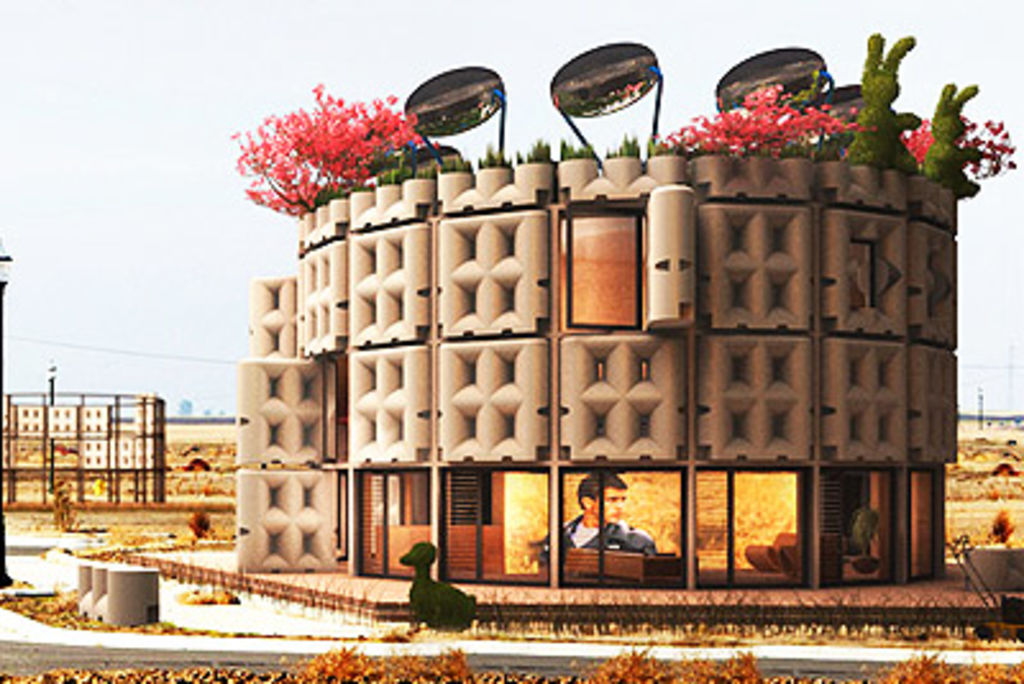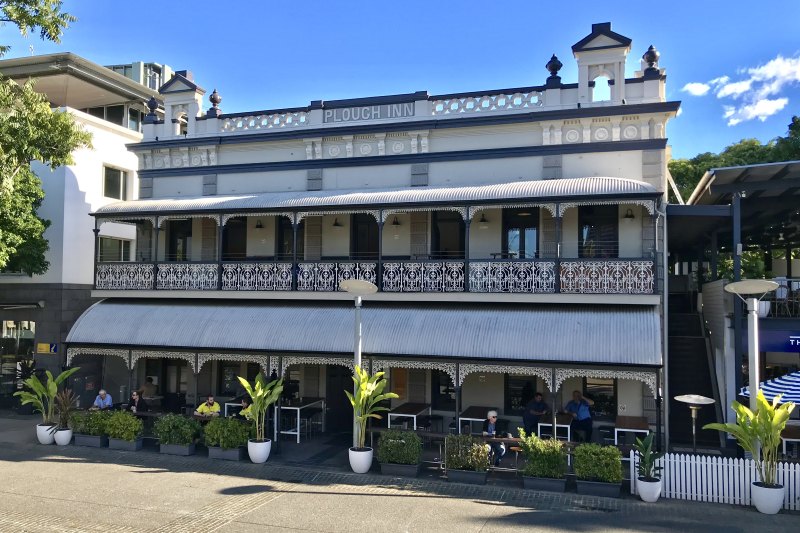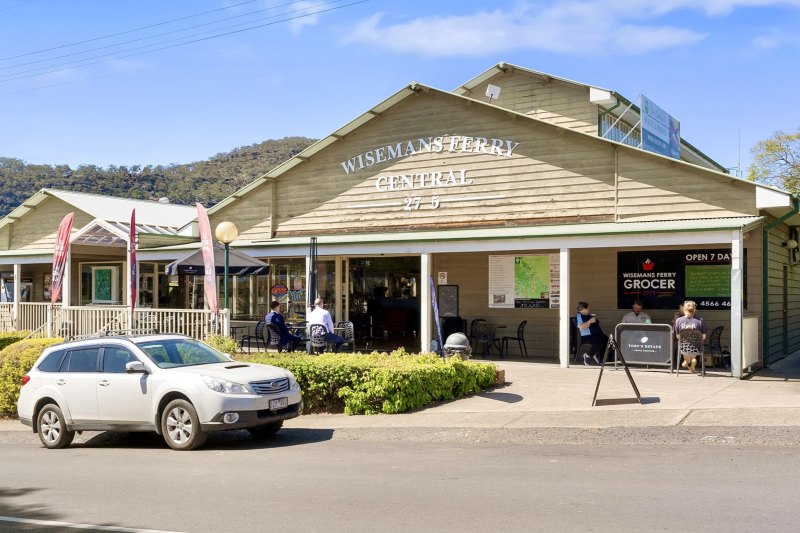Towards 2025: How we will live?

The dream Australian home has been set in stone for decades. Based on the American model, homeowners over the years have aspired towards the minimum quarter-acre plot, plenty of space for entertaining, at least four bedrooms — with ensuites if possible, and room to park a couple of cars off the street.
It’s also a dream that is driving our cities ever outwards, devouring green belt land and townships as they go, without any sign of slowing. So, as we face environmental concerns both locally and globally, is the dream more of a nightmare?
Domain asked three Melbourne-based architectural firms to consider how the Australian dream home will evolve, in particular their vision for such a home in 2025.
All three placed sustainability as a key element in their responses. Their solutions, though, were dramatically different.
Studiobird looked at how to incorporate a multi-generational immigrant family within one plot. BENT turned suburban living through 90 degrees while ARM cited the end of days as depicted in Revelations.
The Haveli
Studiobird
The concept: To house a multi-generational immigrant family from India that is used to cohabiting in a home that combines living and working spaces on a typical suburban plot.
“We need to densify the city by using the green corridor of suburban backyards. This is actually a real project from an Indian couple who see it as helping to improve immigration,” says Matthew Bird.
Studiobird is aiming for flexible living. “Gone are the days of separate living rooms and TV rooms and multiple bedrooms. We’re pushing the idea that you can change a room’s configurations by sliding across a door to form walls. It helps make the house smaller, which is important as the carbon emissions and costs of building come down to size. The clients also see it as being a precinct that could be opened up for people to come and work there, says Mr Bird.
“Throughout, we want to promote a biodiverse ecology with a vegetable garden and the return of indigenous and regional flora and fauna. Sustainability isn’t just about solar panels and wind turbines, but about a holistic approach.”
Key features
■Existing weatherboard home retrofitted internally to incorporate flexible interconnected living, sleeping and working zones, with sliding walls used to change spaces.
■Younger generations accommodated in new building at the rear accessed via communal courtyard.
■Lower-level features open-plan living, entertaining and working zones with teppanyaki-style kitchen, large glazed sitting area and interchangeable bedroom/study areas.
■Upstairs combines flexible sleeping/reading areas, a double bathroom with communal bathtub and enclosed outdoor area.
■Underground geothermal system, insulated outer walls, floors and ceilings with double-glazed windows.
■Solar energy, evacuated solar hot water, water harvesting, grey water and waste management systems plus a central courtyard that catches storm water.
■Use of light-weight, renewable laminated timbers.
studiobird.com.au
Room + house + suburb BENT Architecture
The concept: To develop a model that can be used to consolidate large sites within the pre-established suburban fabric or develop green field plots.
There are fundamental principles that the 2025 house will need to follow, even if there is not a single model that will solve all of our problems, says BENT’s Paul Porjazoski.
He says that to achieve affordability and sustainability it is essential to look at passive solar principles and also how houses relate because space is wasted in between or in front of houses.
“In our design, the house no longer has to face the street: it faces the sun wherever the front is,” says Mr Porjazoski.
“With the sun coming in from the side, you end up with an L-shaped house with the space at the side acting as the front yard and the backyard. To the back of that is a ubiquitous space that can accommodate changes in the family structure.”
More low-embodied energy, lightweight materials such as fibre cement sheets and timber, which is a great, renewable material, will be used, says Mr Porjazoski.
“A lot of these techniques are here today but are only being used in a tiny percentage of homes. Our hope is that they will infiltrate the market.
“We’re not suggesting that you give up your garden or generous indoor space. We’re saying that, through clever design, you can integrate house and garden in a more efficient, compact and usable way. We can triple suburban density with these sorts of semi-detached homes and duplexes.”
Key features
■Houses oriented to face the sun, not the street, with habitable zones always facing north and, as plot sizes decrease, stacked over two or more storeys to maximise exposure to natural light.
■Service zones (kitchen, bathroom, etc) always oriented south.
■Brick veneer used inside timber to stabilise interior temperatures.
■Greater use of recycled plastics, such as sheets made from mobile phones, to reduce production of landfill.
■Building components built off site.
■Rainwater tanks hidden in floor slabs, stormwater captured, grey water treated and reused.
■Solar panels applied to surface building materials.
■Green roofs to insulate buildings.
■Multi-purpose rooms throughout with a space that can change use from games room to granny flat or other as required.
bentarchitecture.com.au
The ideal villa ARM
The concept: The Garden of Eden is gone; now we must consider the perfect city as suggested by the prophets in Revelations chapter 21.
“The dream is wrong; the whole basis is wrong. Our dream home would be perfect in the Garden of Eden but it had little to offer about living in the city,” says Howard Raggatt.
“There must be this mind-shift to desire the city: the desire to have a place for the people rather than the individual.”
Raggatt says that when Docklands was being redesigned in 1992, real estate agents said the new developments would not sell.
“Yet a few years later nothing was being sold other than 35-storey towers, so the whole ingrained culture was tied up in this strange, dated mindset.
“There are models such as Paris and Barcelona where they picked a reasonable height to build to, which in Paris was how many flights you could walk up. Modern efforts can be different as we have a lot more technology. But we also face different dilemmas . . . we do face environmental disaster.
“At the extremes, the dream of the individual castle — small or big — does not a city make. It just becomes so fragmented and distorted that it can’t really work in an effective way.”
Key features
■Circular shape means eight-metre diameter gives 100 sq m total area.
■Clad in “Fatboy” water tanks.
■Roof garden with solar collector bubbles.
■Downstairs is all living space; upstairs all individual rooms.
a-r-m.com.au
We thought you might like
States
Capital Cities
Capital Cities - Rentals
Popular Areas
Allhomes
More







